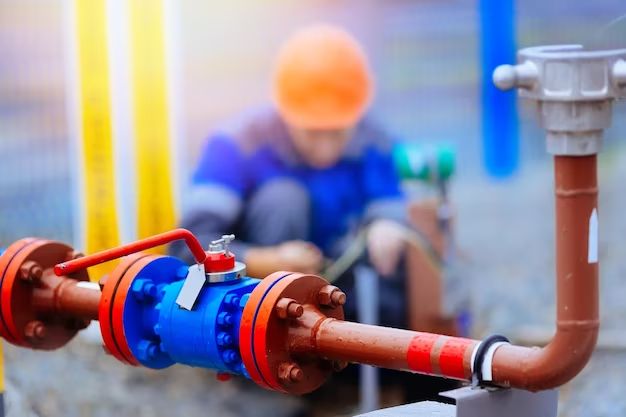Using push connect fittings for gas lines is a convenient option for do-it-yourselfers, but there are important safety considerations to keep in mind. Push connect fittings, also known as “quick connect” or “strapless” fittings, allow gas lines to be assembled without soldering, threaded seals, or clamps. Instead, they use an internal grab ring to grip piping when it is inserted into the fitting. While push connect fittings can make the installation process easier, they also come with some limitations regarding their appropriate use for gas.
Page Contents
Are Push Connect Fittings Approved for Gas Lines?
Whether or not push connect fittings are approved for gas depends on the specific fitting and application. There are some push connect fittings that are certified for use with natural gas and LP gas, while others are intended only for water and air applications. Fittings made from brass and certified to ANSI LC4/CSA 6.32 standards are typically approved for below ground gas line use. However, even approved push connect fittings have limitations on the gas pressures they can handle, types of piping they can be used with, and whether they can be used above or below ground. It is important to check the manufacturer’s specifications before using any push connect fitting for gas.
Below Ground Gas Line Applications
Push connect fittings that meet ANSI LC4/CSA 6.32 requirements can be used for underground gas piping before the gas meter. This includes supply lines between the utility gas main and the inlet of the gas meter. The fittings must be made of corrosion resistant brass and certified for such underground gas use. The fitting should be marked with “AG” or “AGS” to indicate approval for below ground applications with natural gas and LP gas respectively.
Above Ground Gas Line Applications
Push connect fittings are more limited for above ground gas piping after the meter. Any fittings used above ground must be certified to ANSI Z21.24/CSA 6.10 standards for above ground piping systems. Very few push connect fittings meet these requirements, so threaded and compression fittings are more common for interior gas line connections. Consult the manufacturer’s literature to see if a push connect fitting can be used above ground before installing it for any gas piping after the meter.
Advantages of Using Push Connect Fittings for Gas
When used appropriately, push connect fittings offer several advantages for gas line installation:
Quick and Easy Installation
Push connect fittings allow gas piping to be run and assembled more quickly. Rather than needing to thread pipes, solder joints, or tighten clamps, pipes simply push directly into the fitting. This can significantly reduce installation time.
No Special Tools Needed
Working with threaded and soldered connections requires pipe wrenches, threaders, torches, flux, and other specialty tools. Push connect fittings only need the pipe to be cut squarely and deburred. The fittings can be installed using basic hand tools.
Secure Seal
When properly installed, the grab ring inside a push connect fitting creates a very secure joint. The rings grip the pipe tightly to prevent pulling out or leaks. A proper push connect joint can have similar integrity to a threaded or soldered joint.
Reusable & Adjustable
If push connect fittings need to be removed for maintenance, they can be reused rather than replaced like soldered joints. Their adjustability also allows some rotation for alignment after initial assembly.
Disadvantages of Using Push Connect Fittings for Gas
Despite their advantages, using push connect fittings for gas lines also comes with some downsides:
Limited Pressure Ratings
Most push connect fittings for gas have relatively low pressure ratings around 5 psi or less. This makes them suitable only for low pressure gas lines. They cannot be used for natural gas appliance supply lines that require higher pressures.
Specialized Applications
As mentioned above, the allowed uses for push connect gas fittings are limited. This means they cannot necessarily be used as a one-size-fits-all solution for all gas piping scenarios. Their certifications and designations need to be reviewed before use.
Potential for Improper Installation
Push connect fittings rely on being installed properly for their leak-free seal. If pipes are not cut squarely or inserted fully past the grab ring, leaks can occur. There are more opportunities for user error compared to professionally soldered or threaded connections.
Difficult to Inspect
A key disadvantage of push connect fittings is the inability to visually inspect the seal. Soldered and threaded joints can be observed directly, but the internal grab ring seal is hidden inside a push connect fitting. This makes it harder to confirm a proper leak-free connection.
Rules for Using Push Connect Fittings for Gas
When using approved push connect fittings for gas lines, the following rules must be followed:
- Only use fittings certified for gas use according to ANSI LC4/CSA 6.32 (below ground) or ANSI Z21.24/CSA 6.10 (above ground).
- Ensure the fitting is compatible with the type of gas (natural or LP) per the markings.
- Do not exceed the fitting’s maximum pressure rating.
- Only use with approved piping types like copper, PE, or PVC.
- Pipe ends must be cut squarely and deburred before inserting into the fitting.
- Fully insert pipes past the internal grab ring according to the manufacturer’s instructions.
- Use pipe supports to prevent strains on the connections.
- Check for leaks by pressurizing and soap testing all fittings after assembly.
Conclusion
Push connect fittings can provide a faster, easier way to connect gas lines in certain situations as long as the right safety guidelines are followed. Their use is approved for below ground gas piping, but limited for interior or high pressure gas line applications. Following the manufacturer’s specifications and certification requirements is crucial when using push connect fittings with gas to ensure safe, leak-free performance. With proper installation, certified push connect fittings can be a handy option over soldering or threading connections.
